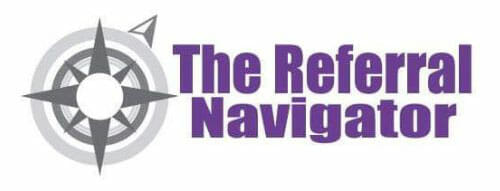Referral-based business development is a marketing strategy that leverages existing clients to refer to new business. When done correctly, it can be an incredibly efficient way to grow your business as it is cost effective and has other advantages such as client loyalty and impressive conversion rates.
You might be thinking, “Who should I get referrals from, how do I kickstart the process, and what’s the compelling reason behind embracing referral marketing?” Let’s delve further into understanding the steps behind crafting a successful referral marketing strategy.
1. Have a written Business Development Plan.
A well-crafted business development plan can be a game-changer. Many firms often overlook this crucial step. Create a detailed business development plan that would serve as a roadmap for your firm’s growth. The plan should outline your company’s:
Strengths: Identify your firm’s strengths, such as expertise or specific areas of specialization, what you have to offer, who you know, or any other unique advantages in what you could offer. Note any systems, tools, processes, skills, or knowledge related to generating referrals from clients and other professionals.
Goals: Clearly define your firm’s goals. Where would you like to be in 5 or 10 or 20 years from now? Make it SMART – specific, measurable, achievable, relevant and time-bounded.
Mistakes, concerns, roadblocks: Identifying present or potential challenges in achieving your goals. Time and money constraints should be clarified in detail. Negative feelings and emotions should not be overlooked.
Action plan: For each identified goal or roadblock, outline a strategic action plan. Specify steps to mitigate challenges and navigate complexities. Address who on the team will do what, when, how, where and how often. Detail how tools, like CRN, will be used to create a systematic way of following up with client and professional referral sources. Failing to plan is planning to fail.
Help wanted: Determine the resources and support required to execute your business development plan effectively. This could involve additional team members, technology, external partnerships, or a consultant’s training or advice.
2. Rank and prioritize your Referral Sources with a CRM tool.
- Identify and compile a list of potential sources of referrals within your current relationships. These could include satisfied clients, colleagues in complementary fields, or members of your groups and organizations.
- Rank, categorize, and prioritize your best prospects, clients and professional relationships by letter grade as referral sources. (A, B, C or D should be fine).
- Capture valuable information about your prospects, clients, and referral sources including their strengths, goals, concerns, who they know and their motivation and justification to refer.
- Use a CRM tool to maintain a detailed referral history, making it easier to track and manage the progress of referrals and introductions made and received.
- Use the CRM tool to prompt follow-ups, and to track activity and results such as how many times introductions were requested and made.
3. Training on referral conversations:
Successful businesses do a great job implementing systems and training on how to have the most effective referral conversations. Some consultants or trainers do a great job helping professionals and companies to consistently review and improve their skills in business development. Written steps to follow, questions to ask, and referral stories of success to share should be practiced on a recurring basis. Even the best originators should sharpen the saw while the less successful on the team watch them continue to improve.
1. Make lists of questions to ask to deepen relationships, get to know people’s strengths and goals, learn who they know, identify the groups and organizations they are a part of, and find ways to make introductions for them. Capture that information in the CRM.
2. Have steps to follow in three conversations: (1) relationship building (2) referral (3) converting prospects to clients.
3. Identify actual referrals that have led to significant successes for your business. These could be cases where a satisfied client referred a new client or a professional relationship led to a referral.
4. Gather firsthand feedback and testimonials from both the referral source and the referral. These should highlight the challenges addressed, the journey, and the positive outcomes achieved for both the referral source and the referral. The story shares the motivation of the referral source by highlighting the benefit they received for being the source. The story also highlights the justification of the referral source to refer as it shows the benefit for the referral.
5. Write down these stories in a clear, engaging, and concise format. You can use them in marketing materials, presentations, and conversations with referral sources. Use names and specific details (with consent) to add authenticity.
6. Have written questions used to gather the perceptions of those listening to the referral stories. Find out their perspective on motivation to refer and justification to refer in their own words. Capture that information in the CRM.
In the world of professional firms, where every opportunity counts, improvements in referral-based business development can be a game-changer. It is about nurturing current relationships, amplifying your unique strengths and skills, deepening and expanding professional referral relationships, leveraging tools and systems purposefully, acquiring new clients, and strategically steering your business towards more success.






